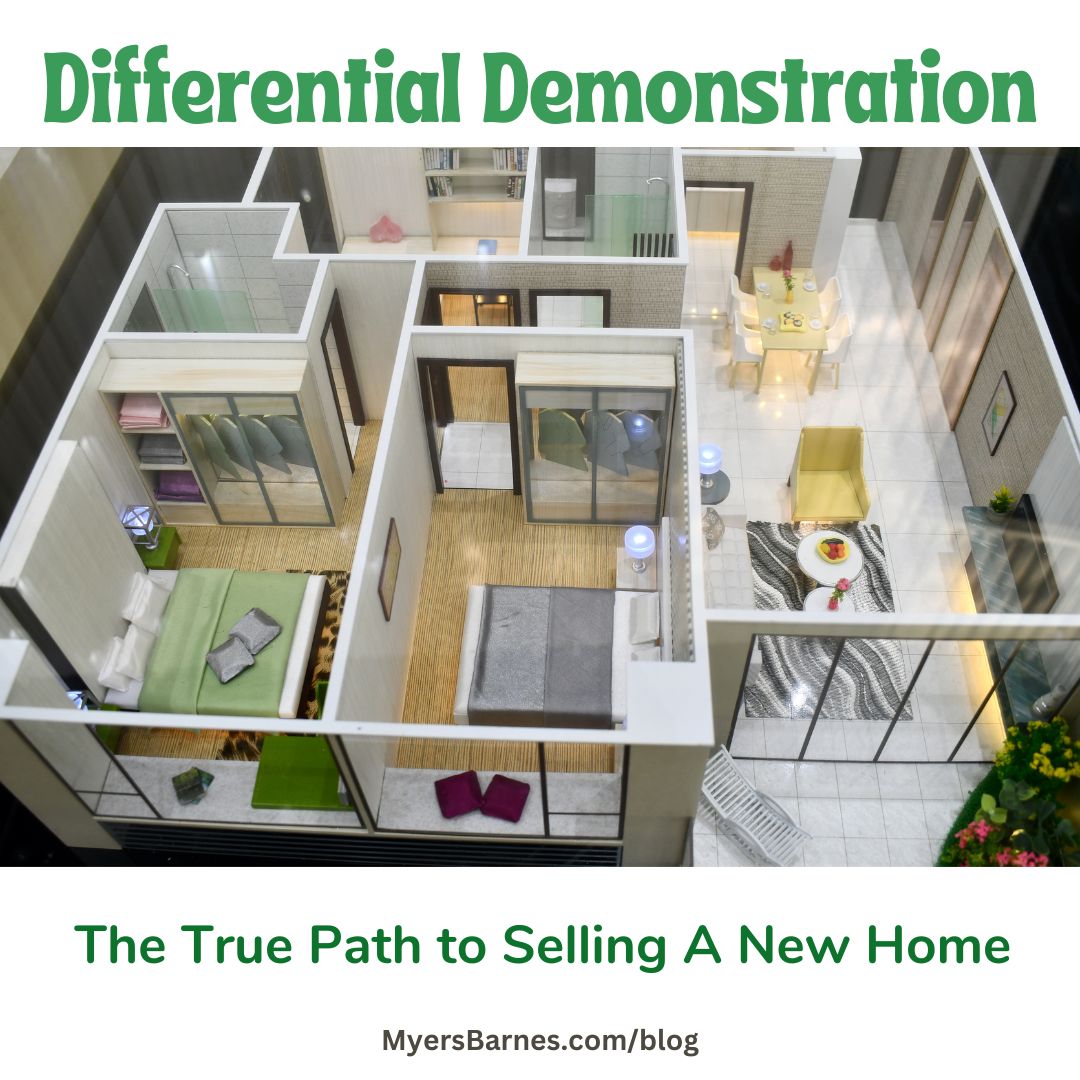 I recently explained that showing a model home is a new home sales skill that can and should be learned. The process is as carefully strategized and practiced as the art of negotiation! Differential demonstration is a specific approach to guiding a prospective buyer through a new home. Follow this path to effectively demonstrate a model home—not just show it.
I recently explained that showing a model home is a new home sales skill that can and should be learned. The process is as carefully strategized and practiced as the art of negotiation! Differential demonstration is a specific approach to guiding a prospective buyer through a new home. Follow this path to effectively demonstrate a model home—not just show it.
Step 1: The introduction
Explain that you plan to guide your buyer carefully through the model home in a way that ensures they gather all the information they need. Start out by stating the purpose because you might need to refer to it during the tour.
Step 2: Always start from the outside.
Would you welcome a guest in your home at the back door or through the garage? Is that the impression of your home you want them to have?
Start from the outside of the model home, where you can demonstrate the curb appeal to begin the presentation. Even if the sales center is in the home’s modified garage, take your buyer outside and to the curb. Don’t assume they took in the full view when they arrived. Use the opportunity to present the home’s design, exterior features, homesite, and overall outside appearance. Share the floor plan’s name, the square footage, and the number of bedrooms and baths.
Step 3: Enter and pause.
Bring your prospects through the front door and pause to give them a view. Point out the sight lines and natural light. Wait while they take in this first view and point out the features that are visible from here.
“As you can see, there’s a formal dining room right here. Is that a space that’s important to you? Some homeowners convert the formal dining room to other uses, like a home office, library, workout studio, or an extra playroom. How would you use this room?”
Step 4: Walk through the open floor plan but skip the kitchen demonstration…for now.
The kitchen is a definite stopping point in a new home demonstration. But this is something to hold for later, like the crescendo of the differential demonstration. Let your buyer take in the open floor plan. Point out the living room details, the view, the windows, and the dining area.
But don’t dive into presenting the kitchen at this point. Yes, they can see it, but you can tell them, “We’ll come back to the kitchen and explore it in more detail, but I want to show you some of the other features before we do that.”
Step 5: Move to the secondary bedrooms.
You might be inclined to go to the primary suite next in your new home sales demonstration. Don’t. Again, we’re building anticipation, working toward the “TA-DA!” moment. Instead, point out the location of the secondary bedrooms. Share the measurements, the closet space, and the proximity to other spaces. Families with young children like to have the secondary bedrooms closer to the primary suite. With older children, they might want more distance between the rooms. Play to your audience.
Step 6: Return to the kitchen.
Okay, NOW you can explore the wonders of the model home’s kitchen. What’s the point of skipping it on the first round and then returning? You want to have multiple views of the kitchen, perhaps the most critical space in the model home. This path allows you to do that.
Take your time. Mention every detail and explain its importance, particularly if the feature is not always included by other builders.
Step 7: Hit the high note.
From the kitchen, follow your differential demonstration path to the primary suite. Guide them through the ideas and questions that move them to imagine living here. The generously sized closet. The big windows that give you a relaxing view first thing in the morning. Extol the virtues of an oversized shower, a soaking tub, dual vanities, and a private water closet (or any of the above).
Step 8: Demonstrate the outdoor living spaces.
Conclude the interior differential demonstration and move to the outdoor living space. Take the buyers to the farthest point in the rear corner of the lot. From here, they can view the back of their possible new home. Point out the features and ask more questions about how they could imagine using the area. “The deck/patio is a great place to entertain. Do you enjoy cooking outdoors and hosting get-togethers?”
Step 9: Wrap it up in a desirable package.
Bring your buyers back inside the home. Ask if they want to revisit any spaces. Encourage them to look around and take their time. Don’t hover, but be available (e.g., in the family room, not back in the sales office).
Why should you use differential demonstration?
Does this process make sense to you? Can you follow the logic of guiding a homebuyer along a planned path?
Anyone can do a Vanna White-like showing of a home. But if your goal is to sell a new home, you must do more than wave your arm at the spaces. Communicate the benefits, one at a time and purposefully. Bring the buyer into every room by asking them questions.
You don’t negotiate without a strategy. Don’t present a home without one either.
This is a simplified explanation of Differential Demonstration. I’m currently updating my workbook on the subject, Differential Demonstration: How to Effectively Show a House. Contact me to reserve your copy and get in-depth knowledge into a critical process for new home sales.


